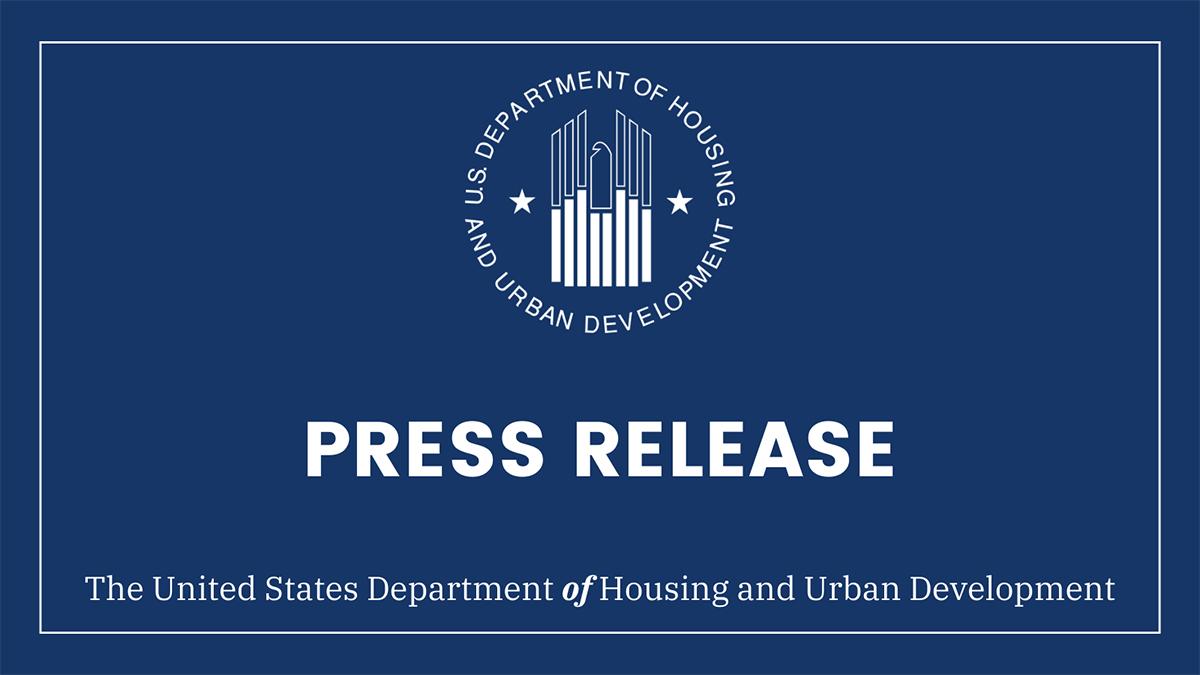HUD Announces $212 Million Funding Opportunity to Expand Affordable Housing Options for Persons with Disabilities
HUD Announces $212 Million Funding Opportunity to Expand Affordable Housing Options for Persons with Disabilities HUD


Funding Available to Expand Affordable Housing for Persons with Disabilities

WASHINGTON – The U.S. Department of Housing and Urban Development’s Office of Multifamily Housing announced today that $212 million in funding is available to expand the supply of affordable housing and supportive services for very-low and extremely-low-income persons with disabilities. The funding is available to participants in the Section 811 Supportive Housing for Persons with Disabilities program, which helps develop, subsidize, and provide supportive services for rental housing to meet the needs of this vulnerable population.
The U.S. Department of Housing and Urban Development (HUD) is committed to addressing the Sustainable Development Goals (SDGs), particularly Goal 11: Sustainable Cities and Communities. This funding opportunity aligns with Goal 11 by aiming to provide affordable housing that caters to the needs of persons with disabilities, ensuring their inclusion and access to appropriate supportive services.
Housing Accessibility for Persons with Disabilities
HUD Secretary Marcia L. Fudge emphasized the importance of accessible housing for all Americans, stating, “Every American should have the ability to live in affordable housing that caters to their needs. Unfortunately, today, far too many housing options are inaccessible to those with disabilities – and those with the appropriate accommodations are often too expensive.”
The Section 811 Supportive Housing for Persons with Disabilities program addresses this issue by providing funding to expand the supply of affordable housing and supportive services for low-income individuals with disabilities. This funding opportunity contributes to the achievement of SDG 10: Reduced Inequalities, as it aims to ensure equal access to affordable housing for persons with disabilities.
Funding Details
The funding is available through the Section 811 Capital Advance/Project Rental Assistance Contract (PRAC) program. It provides $106 million in capital advances for the development of new or rehabilitation of existing supportive housing. Additionally, project rental subsidies are offered to keep homes affordable.
The Section 811 Project Rental Assistance (PRA) program provides $106 million to state housing and other agencies. This funding covers the difference between tenants’ contributions toward rental payments and the HUD-approved rent for eligible tenants with disabilities. By offering rental assistance, this program contributes to SDG 1: No Poverty, by ensuring that extremely low-income persons with disabilities have access to affordable housing.
Goal of the Program
Ethan Handelman, Deputy Assistant Secretary for Multifamily Housing Programs, highlighted the program’s goal, stating, “The goal is to provide people with disabilities the opportunity to live with dignity and independently within an integrated community that provides them with access to appropriate supportive services that they choose.” This aligns with SDG 3: Good Health and Well-being, as it aims to support individuals with disabilities in living independently and accessing necessary support services.
Application Information
Interested parties can find more information and access the funding notices for the Section 811 Capital Advance Program and Section 811 Project Rental Assistance on the Grants.gov website. The deadline for applications is February 8, 2024.
About the Section 811 Program
The Section 811 program enables persons with disabilities to live as independently as possible in the community by subsidizing rental housing that provides access to appropriate supportive services. The Section 811 Capital Advance Program aims to expand the supply of integrated affordable housing by providing funding for the development of permanent supportive rental housing for very-low-income individuals with disabilities. The program also offers project rental subsidies to maintain ongoing affordability.
The primary purpose of the Section 811 Project Rental Assistance (PRA) Program is to increase housing options for extremely low-income persons with disabilities. HUD seeks to support collaborations between State Housing and Health and Human Service/Medicaid Agencies to increase access to affordable permanent supportive housing units with appropriate services. This program contributes to SDG 11 by promoting sustainable cities and communities that are inclusive and accessible for all.
SDGs, Targets, and Indicators
-
SDG 1: No Poverty
- Target 1.3: Implement nationally appropriate social protection systems and measures for all, including floors, and by 2030 achieve substantial coverage of the poor and the vulnerable.
- Indicator 1.3.1: Proportion of population covered by social protection floors/systems, by sex, distinguishing children, unemployed persons, older persons, persons with disabilities, pregnant women, newborns, work-injury victims, and the poor and the vulnerable.
-
SDG 10: Reduced Inequalities
- Target 10.2: By 2030, empower and promote the social, economic and political inclusion of all, irrespective of age, sex, disability, race, ethnicity, origin, religion or economic or other status.
- Indicator 10.2.1: Proportion of people living below 50 percent of median income, by age, sex and persons with disabilities.
-
SDG 11: Sustainable Cities and Communities
- Target 11.1: By 2030, ensure access for all to adequate, safe and affordable housing and basic services and upgrade slums.
- Indicator 11.1.1: Proportion of urban population living in slums, informal settlements or inadequate housing.
-
SDG 17: Partnerships for the Goals
- Target 17.17: Encourage and promote effective public, public-private and civil society partnerships, building on the experience and resourcing strategies of partnerships.
- Indicator 17.17.1: Amount of United States dollars committed to public-private partnerships.
Table: SDGs, Targets, and Indicators
| SDGs | Targets | Indicators |
|---|---|---|
| SDG 1: No Poverty | Target 1.3: Implement nationally appropriate social protection systems and measures for all, including floors, and by 2030 achieve substantial coverage of the poor and the vulnerable. | Indicator 1.3.1: Proportion of population covered by social protection floors/systems, by sex, distinguishing children, unemployed persons, older persons, persons with disabilities, pregnant women, newborns, work-injury victims, and the poor and the vulnerable. |
| SDG 10: Reduced Inequalities | Target 10.2: By 2030, empower and promote the social, economic and political inclusion of all, irrespective of age, sex, disability, race, ethnicity, origin, religion or economic or other status. | Indicator 10.2.1: Proportion of people living below 50 percent of median income, by age, sex and persons with disabilities. |
| SDG 11: Sustainable Cities and Communities | Target 11.1: By 2030, ensure access for all to adequate, safe and affordable housing and basic services and upgrade slums. | Indicator 11.1.1: Proportion of urban population living in slums, informal settlements or inadequate housing. |
| SDG 17: Partnerships for the Goals | Target 17.17: Encourage and promote effective public, public-private and civil society partnerships, building on the experience and resourcing strategies of partnerships. | Indicator 17.17.1: Amount of United States dollars committed to public-private partnerships. |
Analysis:
The article addresses or connects to the following SDGs:
- SDG 1: No Poverty
- SDG 10: Reduced Inequalities
- SDG 11: Sustainable Cities and Communities
- SDG 17: Partnerships for the Goals
The specific targets under these SDGs that can be identified based on the article’s content are:
- Target 1.3: Implement nationally appropriate social protection systems and measures for all, including floors, and by 2030 achieve substantial coverage of the poor and the vulnerable.
- Target 10.2: By 2030, empower and promote the social, economic and political inclusion of all, irrespective of age, sex, disability, race, ethnicity, origin, religion or economic or other status.
- Target 11.1: By 2030, ensure access for all to adequate, safe and affordable housing and basic services and upgrade slums.
- Target 17.17: Encourage and promote effective public, public-private and civil society partnerships, building on the experience and resourcing strategies of partnerships.
The indicators mentioned or implied in the article that can be used to measure progress towards the identified targets are:
- Indicator 1.3.1: Proportion of population covered by social protection floors/systems, by sex, distinguishing children, unemployed persons, older persons, persons with disabilities, pregnant women, newborns, work-injury victims, and the poor and the vulnerable.
- Indicator 10.2.1: Proportion of people living below 50 percent of median income, by age, sex and persons with disabilities.
- Indicator 11.1.1: Proportion of urban population living in slums, informal settlements or inadequate housing.
- Indicator 17.17.1: Amount of United States dollars committed to public-private partnerships.
Behold! This splendid article springs forth from the wellspring of knowledge, shaped by a wondrous proprietary AI technology that delved into a vast ocean of data, illuminating the path towards the Sustainable Development Goals. Remember that all rights are reserved by SDG Investors LLC, empowering us to champion progress together.
Source: hud.gov

Join us, as fellow seekers of change, on a transformative journey at https://sdgtalks.ai/welcome, where you can become a member and actively contribute to shaping a brighter future.







